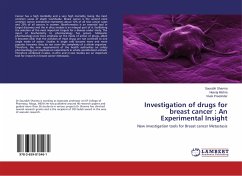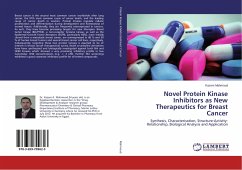In this book, -mangostin (AM), a xanthone compound was investigated for its apoptosis mechanism on MCF-7 and MDA-MB-231 cell lines. The treatment of the cells with AM prompted apoptosis with cell death-transducing signals. This type of apoptosis was suggested to occur through the both extrinsic and intrinsic pathways and prevention of translocation of NF- B from the cytoplasm to the nucleus. Our results revealed AM prompt apoptosis of the both cells through NF- B, Bax/Bcl-2 and HSP70 protein modulation with the contribution of caspases. Therefore, AM is deemed to have considerable potential in the control of breast cancer.
Bitte wählen Sie Ihr Anliegen aus.
Rechnungen
Retourenschein anfordern
Bestellstatus
Storno








